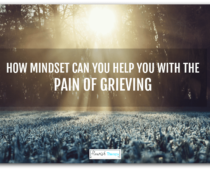Fear of failure: 14 ways to turn failure into your advantage
Fear of failure: 14 ways to turn failure into your advantage
The fear of failure
The fear of failure is called atychiphobia. I like to refer to it as “a titchy phobia”, because it helps to remove some of the importance we attach to this debilitating fear. Failure happens to all of us at various points during our lives. How we let the fear of failure affect us can make the difference between us going after our dreams and achieving them, or staying stuck in a rut, risking a life of regrets.
Failure or feedback?
In 1953, three engineers set about creating a product that would protect metal against rust to use in the aerospace industry. It took those engineers 40 attempts before they finally arrived at the right formula to effectively displace water and protect metal. That product is known as WD-40 (Water Displacement 40th Formula). It’s so ubiquitous that in 1993 it was found to be in 4 out of every 5 US households! Imagine if those engineers had given up after the first few attempts. Each new formula which didn’t work, was just another way to not effectively displace water. Imagine all the squeaky hinges and rusting metal we would be suffering had those three engineers not continued in their endeavours!
I refer to this story, one because it’s a fascinating story and not many people are aware of what WD-40 stands for. Secondly, because had those engineers viewed themselves as failures because it took them 40 times to find the right formula, they would never have enjoyed the enormous success the company can now celebrate.
“Failures are finger posts on the road to achievement.” CS Lewis
First steps
We all fail many times during our lives. Consider when you were a child learning how to take your first steps. You took a few steps then fell down. You got back up and tried again, and fell down. But you persevered and finally you could walk, then you could run, then you could hop on one leg. Each time you fell down, you were doing something that wasn’t successful in keeping you upright. But you kept trying and eventually mastered the skills necessary to make walking second nature to you.
The beauty of being
The beauty of being a child is that we don’t see not succeeding immediately as failure. We don’t beat ourselves up about it. We just keep trying without considering the social and/or emotional implications. We don’t care whether little Jonnie next door walks before we do, or whether we walk before him. It doesn’t matter to us as children, because we’ve not yet learned to compare ourselves to others. We just are. And that’s the beauty of childhood. We just are.
Fear of failure gremlins
Unfortunately, as we mature, we become more self-conscious, more self-aware, more self-sabotaging and more prone to avoidance of behaviours we’re not yet familiar with. The fear of failure develops when you build an internal representation of what might go wrong. This internal representation you construct ensures you avoid doing the very thing you need to do to go after the results you want.
The fear of failure develops when you build an internal representation of what might go wrong. Click To TweetSo how can we overcome our fear of failure and make sure it remains “a titchy phobia”? Below are 14 considerations to help you overcome your fear of failure:
1. We always get results
It’s important to acknowledge that we always get results. They might just not be the results we were hoping to achieve at that time. By reframing how we perceive failure as helpful feedback, we open ourselves up to a world of possibility where we just might dare to go after our dreams. After all, it’s as simple as realising that what doesn’t work increases your chances of eventually finding the solution.
2. We all make mistakes
We all make mistakes. You are not alone. No-one is immune to making or causing the occasional cock up. The important thing to do when we make a mistake is to learn from it. We can also learn from the mistakes of others. That’s why modelling how successful people have achieved their goals is such an effective way to achieving your dreams quickly.
No-one is immune to making or causing the occasional cock up. The important thing to do when we make a mistake is to learn from it. Click To Tweet
3. Modelling
For example, if you are overweight, you have been successful at getting yourself into a state which is known as fat. If you want to slim down, model how you behave, what you eat, what exercise you take on someone who has already achieved the state of being slim.
If you want to be a successful entrepreneur, model your behaviour on someone in your niche who has achieved the success that you want. If you align how you live your life as closely as possible to the person whose life you admire, you stand an impressive chance of achieving that goal. What’s more, you risk far less as it’s likely that the entrepreneur you are modelling yourself upon has already made the mistakes you will hopefully be able to avoid. The more important message in this is that the entrepreneur has made mistakes and moved on. Those mistakes have been used as feedback. Feedback to show how not to do something. Then that individual has taken fresh steps to work towards achieving his/her goal.
4. Be clear on your goals
When you know where you’re heading, it’s a whole lot easier to navigate the chart to get there. And when a hiccup arises, you can find a way of altering your course to make the necessary adjustments. When the fear of failure is holding you back, write down your goal, then work backwards, noting the steps you need to take to achieve it. By chunking it down, each section will become much easier to succeed at. When you work at each chunk of the bigger goal as a separate section, the whole process becomes more manageable.
5. Be optimistic
Successful people use failure to give them feedback so they can keep fine tuning, moving, turning and learning what not to do to achieve their goal. When you set your goal, expect the best. When you have an optimistic outlook, it will help counter the times when the what-ifs creep in. By having a positive attitude about your endeavours, you will gain momentum to help you manage the bumps in the road that are likely to appear from time to time. How you allow your fears to affect you is down to your resolve so try and maintain a bright outlook while you go after your goals. After all, once you’ve committed to a plan of attack, you may as well make the most of it. Optimism will be a helpful ally if times get difficult.
6. Be flexible
When things don’t go as planned, adjust your course. If you can’t move forwards, move sideways, but keep moving. Life never stands still, so even the best-laid plans will need adaptation and flexibility. When I plot a course to fly in the helicopter I am constantly needing to make tiny adjustments. The wind pushes me off course, the helicopter is inherently unstable and constantly needs small nudges to keep it upright and aligned. Navigation involves a constant dance of small corrections, yet they ultimately deliver me to my desired outcome. Life’s the same. It takes constant adjustments to get us to where we want to go.
7. Turn your mistakes into lessons
Often, our biggest mistakes form part of our steepest learning curves. When we don’t push ourselves, or try something new, we stay stuck. Our comfort zone is our worst enemy when it comes to personal development and self-growth. What’s more, we need the dark to appreciate the light. When life is moving along contentedly and predictably, it becomes boring. We need challenges to keep us fresh, to keep us growing and to ensure we keep learning.
8. Remove emotions
If you knew you couldn’t fail, how would that change your life? How would it change your behaviours? Do you think you’d try out new things?
The key concept here is to understand that failure means something terrible to us because we attach emotions to it. Emotions such as shame, guilt, anger, frustration, disappointment. It’s these emotions which cause us to fear failure which then causes us to hold ourselves back from our personal development. When you start to see failure as feedback as to how not to do something you avoid building resistance and self-sabotaging by abandoning your project. Separate the story from the facts. When failure is just feedback, you know what not to do next time which then increases the chances of finding a successful outcome.
When you start to see failure as feedback as to how not to do something you avoid building resistance and self-sabotaging by abandoning your project. Click To Tweet9. Nothing ventured nothing gained
If you never go after your dreams, you’ll never know if you could have achieved them. When opportunity opens for you, take it! Instead of considering everything that might go wrong, consider everything that might go right. When you adopt this mindset, you are priming your brain for success. If you don’t go after your dreams, you’ll never know if you could have achieved them. I know I’d rather die knowing I tried rather that wishing I’d given it a go. There is no greater waste of life than regret.
10. What makes someone successful?
You might think successful people have it all. They’ve somehow been lucky and have avoided the pitfalls that us mere mortals fall into as a matter of habit. That’s generally not the story though. You’ll find that most successful people have failed more times than most other people. Their success has been borne out of their failures. They’ve gone for their dreams, they’ve failed, learned how to do it better, created momentum and achieved their goals. Successful people have a habit of picking themselves up again, because that’s what success amounts to. Success is defined by a combination of determination, persistence, willingness to learn, flexibility and clarity of goals.
11. What if?
So many people spend much of their time imagining scenarios in their mind as to how the risk of failure looks to them. They experience the possibility of failure so deeply that they ultimately prevent themselves from trying to succeed. Take a few minutes in a quiet place and consider the worst-case scenario of what could happen if you don’t succeed straight away. Often the fear of failure results in catastrophic thinking which leads to chaotic thoughts. Once you crystalize the absolute worst that could happen if you fail, generally it is less severe and less frightening than you originally thought. Then counter this exercise by spending some minutes working out how succeeding in your goals will improve your life. If you never try, you’ll never know. If you don’t jump, you’ll never land.
Failure or feedback: If you never try, you’ll never know. If you don’t jump, you’ll never land. Click To Tweet12. Get comfortable with discomfort
We become so averse to taking risks, or putting ourselves into a position where we might feel uncomfortable and eventually we end up confining our lives to tiny, self-imposed boxes. Is this how you want to live your life? Is this the role model you want to be for your children?
The only way to overcome fear of failure is get out there and go after your goals. Once you get used to that feeling of uncertainty, your courage will grow. What’s more you’ll develop momentum to help to keep you going. One thing is for sure, the fear will never go away while you grow. So, reframe fear as an emotion than can work for you. When you get those fearful feelings, view them as excitement, an opportunity to learn, an opportunity to achieve your goals – and how amazing would that be?! Certainly, pushing through the fear is less painful than staying where you are because you feel helpless. Take comfort knowing that you are not alone.
Pushing through the fear of failure is less painful than staying where you are because you feel helpless. Take comfort knowing that you are not alone. Click To Tweet13. Never give up
Your potential is limitless when you allow yourself to believe it. We are our own worst enemies when it comes to embarking on something unknown and potentially frightening. Try and view new experiences as welcome education giving you an arena in which you can grow. Keep going. If you fall, get back up and keep getting back up so that your dreams become your reality.
14. The choice is yours
The important point to remember is that we all have a choice. We can choose to let the fear of failure cripple us or we can get comfortable with the inevitability of experiencing failure during our lives. How we let failure affect us will largely determine how we live our lives. What do you choose?
“If you are distressed by anything external, the pain is not due to the thing itself, but to your estimate of it; and this you have the power to revoke at any moment.” Marcus Aurelius























